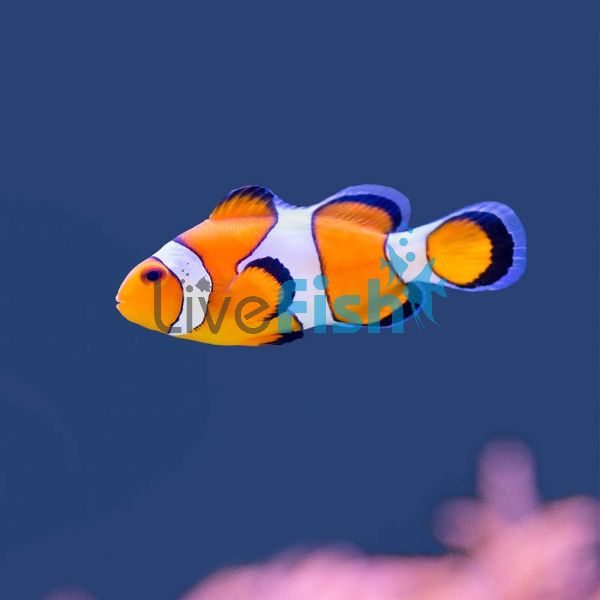Orange & White Clownfish - Large
One of the most recognised and well know fish out of all marine fish. This is no short part due to the Pixar movie Finding Nemo. It's recognisable with its orange body with white bands.
These days Clownfish are almost always captive bred that are available for your aquarium.
So they are already used to eating pre-prepared foods and they generally are hardier than they’re already hardy wild counterparts. In the aquarium like many fish, they live longer than in the wild.
In the absence of females, male clownfish will change sex by growing larger and becoming female. As a general rule, the largest adults are female and the smallest are males.
Many aquarists have had success in breeding these clownfish at home.
With these fish being very hardy they are ideal for beginners too.
These Clownfish are native throughout the Indo Pacific region. All our Ocellaris clowns are aquarium bred in Australia, resulting in parasite-free fish that are easy to acclimatize and feed
Tank Recommendations for Orange & White Clownfish
As with all Clownfish, they are happy to live in a fish only tank or in a reef set up. You can keep a single Clownfish in a 20 Gallon tank.
If you are keeping it with an anemone then you should increase the tank size to the 55 gallons as the anemone will need a larger tank.
Clownfish like to have plenty of live rock and an established tank that is at least 6 months old is ideal. This will let the tank mature and allow algae to get established that the clownfish can eat. Live corals aren’t a problem to have in the tank with Clownfish.
Be cautious about adding Elephant Ear Mushroom or Giant Cup Mushroom anemones. As they can trap juvenile clownfish and eat them.
Suitable Tank Buddies
You can keep Clownfish as a mated pair, but don’t keep them with the more aggressive Clark’s, Tomato or Maroon variations of the species.
These fish are still considered semi-aggressive and can get more aggressive as they get older or if kept with a host anemone.
Usually Compatible
Keep these Clownfish together as a breeding pair in a tank over 100 gallons or with peaceful fish like Gobies, Dartish and Fairy Wrasses.
They’re also safe to keep with Shrimps, Crabs, Snails and Starfish. They are fine with all different types of soft corals
Sometime Compatible
As already mentioned, some other species of Clownfish don't mix well with the Ocellaris Clownfish. Dwarf Angelfish, Tangs, Large Angelfish ans large Wrasses can also be a problem.
Slow swimmers like Pipefish, Mandarins and Seahorses don't do well with Clownfish as they get outcompeted for food.
Rarely Compatible
Don't keep them with any predatory fish that are large to fit them into their mouth and eat them. So fish like Scorpionfish, Lionfish, Eels, Sharks, Groupers or Snappers aren't compatible.
Feeding your Orange & White Clownfish
These Clownfish are Omnivores and so they will eat algae in the tank growing on live rock, but they’ll also take flake and pellet food.
They enjoy getting live foods too like brine and mysis shrimp. You can also feed them blood worms and they’ll eat chopped fish.
It’s good to feed adult clownfish twice a day, feed juveniles three or four times a day.
| Scientific Name | Amphiprion ocellaris |
|---|---|
| Care Level | Easy |
| Common Names | False Percula Clownfish, Common Clownfish, Western Clown Anemonefish, Ocellaris Clownfish, Anemone Demoiselle, False Clownfish, False Clown Anemonefish, Western Clownfish, Anemone Fish, Clown Anemonefish and Clownfish. |
| Diet | Omnivore |
| Fish Family | Pomacentridae |
| Lifespan (years) | 15 |
| Max. Length (cm) | 8 |
| Min. Tank Volume (l) | 75 |
| Origin | Indo-Pacific |
| Reef Safe | Yes |
| Sociability | Peaceful |
| Venomous | No |
| Water Conditions | 22.2-25.6° C (72-78° F), , dKH 8-12, pH 8.1-8.4, sg 1.020-1.025 |




